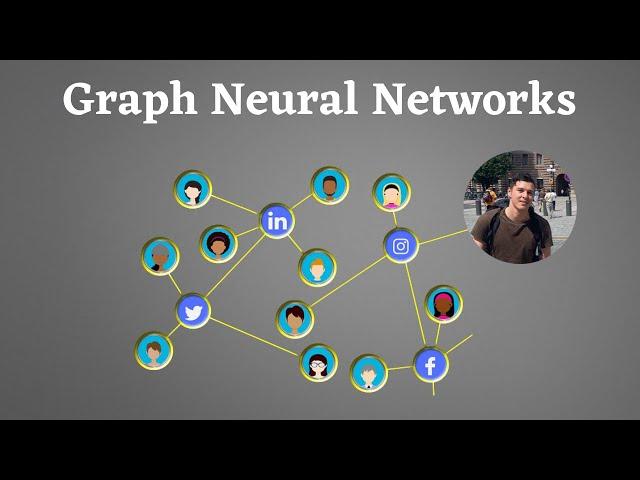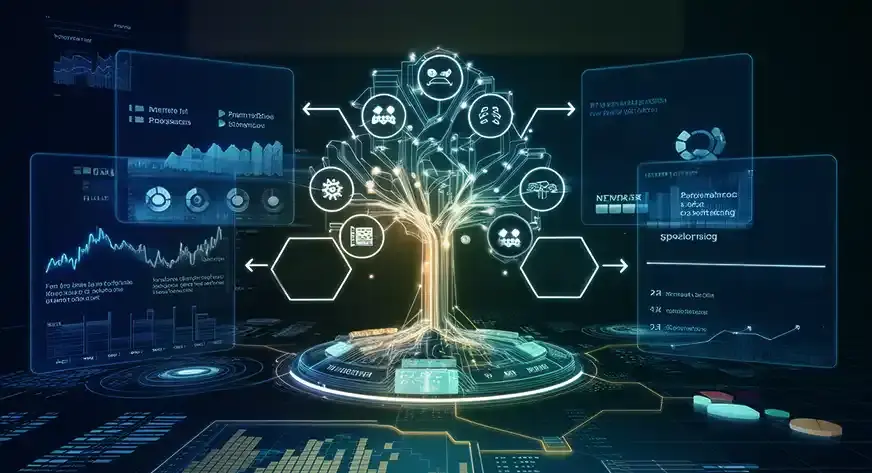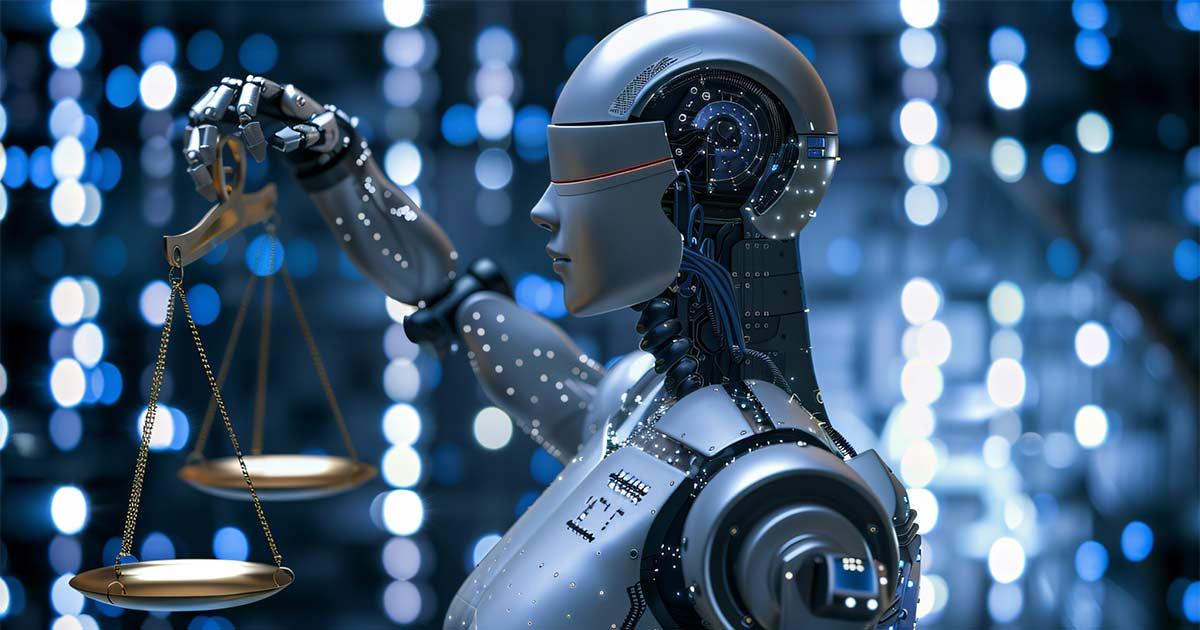Section 1 - Introduction: Why GNNs Are Showing Up in ML Interviews
Until recently, graph-based reasoning was a niche topic, limited to research labs and specialized applications. But as recommendation systems, fraud detection, and scientific AI have evolved, Graph Neural Networks (GNNs) have entered mainstream ML hiring.
From LinkedIn’s People You May Know feature to Pinterest’s content graph and Tesla’s autonomous systems, graph-structured data has become central to real-world machine learning.
So naturally, interviewers have started testing how engineers reason about relationships, not just rows.
If you’re preparing for interviews in 2025, expect at least one round or follow-up question about:
- Graph-based learning,
- Message passing,
- Graph embeddings, or
- Scalability trade-offs in GNN architectures.
Why Interviewers Care About GNNs
Interviewers aren’t testing whether you can implement a GNN from scratch.
They’re evaluating your mental model of connections.
A good candidate can explain:
“Why graphs matter, how information flows through them, and how they differ from CNNs or RNNs.”
That’s what sets apart candidates who understand deep learning mechanics from those who can apply them in context.
As ML systems become more relational, modeling users, transactions, entities, and events, engineers who can reason about interconnected data are invaluable.
That’s why companies like Meta, Stripe, and Amazon now include GNN-related discussion in interviews for senior ML, recommendation, and risk modeling roles.
Check out Interview Node’s guide “Mastering ML System Design: Key Concepts for Cracking Top Tech Interviews”
Section 2 - Core Intuition: What Makes Graph Neural Networks Different (and Why That Matters in Interviews)
When most candidates hear Graph Neural Networks, they picture complex adjacency matrices, message passing algorithms, or obscure math.
But that’s not what interviewers want you to focus on.
The key to nailing GNN questions isn’t memorizing the equations, it’s being able to explain, in simple terms, why graphs require a fundamentally different approach than standard deep learning models.
a. Traditional ML Models See the World as Independent Points
Let’s start with what you already know.
In typical machine learning, whether it’s logistic regression, random forests, or even CNNs, the assumption is independence between samples.
Each input instance (a row, an image, a text sample) is processed individually.
That’s why in a tabular dataset, rows don’t interact; in an image, CNN filters only capture spatial locality within that one image.
This independence assumption makes computation efficient, but it also means that relationships between entities are ignored.
Now think about real-world systems:
- Fraud detection: users are connected through transactions.
- Social networks: people are linked by friendships or interactions.
- E-commerce: products co-occur in carts or sequences.
Ignoring those relationships means losing valuable relational signal, and that’s exactly what GNNs were invented to capture.
b. GNNs: Models That Learn from Relationships, Not Just Features
The defining principle of Graph Neural Networks is that they model both entities (nodes) and relationships (edges).
Instead of treating each sample as independent, a GNN assumes that connected nodes influence one another.
Each node aggregates information from its neighbors using a process called message passing.
At a high level, it works like this:
- Each node starts with a feature vector (like user attributes, transaction details, etc.).
- The node “receives” messages, embeddings, from connected neighbors.
- It aggregates those messages (sum, mean, attention-weighted) and updates its own representation.
- This process repeats across multiple layers, allowing information to flow further through the graph.
After a few layers, a node’s representation encodes both its own features and the structure of its neighborhood.
In other words:
CNNs learn from pixels and proximity.
RNNs learn from sequences and order.
GNNs learn from relationships and structure.
That’s your elevator pitch, and if you can articulate that clearly, you’ll already be ahead of 80% of candidates.
Check out Interview Node’s guide “Deep Learning Architectures and Their Application in Interviews”
c. How to Explain This in an Interview
Interviewers love candidates who can simplify technical ideas without diluting accuracy.
When asked, “Can you explain how a GNN works?” avoid jumping into math right away. Instead, start with structure and analogy:
“A GNN generalizes neural networks to data where relationships matter.
Instead of processing each example in isolation, it allows nodes in a graph to exchange information through edges, like friends sharing news in a social network. Each node updates its understanding based on its neighbors’ context.”
Then, if asked for more depth, build up from there:
“Mathematically, each node updates its embedding using a neighborhood aggregation function:
where are the neighbors of node . This captures both node-level and structural information.”
The trick is to lead with intuition and follow with rigor only if prompted.
That’s how you show both communication clarity and technical maturity, two traits interviewers prize equally.
d. What Interviewers Look for When Asking About GNNs
When an interviewer asks about GNNs, they’re usually evaluating three dimensions:
- Conceptual Understanding:
Can you explain why GNNs are needed? Do you understand that they capture relational dependencies that traditional models can’t? - Structural Awareness:
Do you know the main components, nodes, edges, adjacency matrices, and message passing mechanisms? - Practical Context:
Can you identify where GNNs are useful (e.g., recommender systems, social graphs, molecular modeling)?
They’re not looking for academic definitions, they’re looking for mental models.
A candidate who can say,
“I’d consider GNNs when feature dependencies can’t be captured by tabular or sequential models,”
shows far more real-world reasoning than one who just recites equations.
e. Example Scenarios You Can Mention in Interviews
Interviewers love when you connect theory to practice. Two examples that are safe, clear, and easy to discuss are:
Example 1: Fraud Detection
In financial systems, users and merchants form a transaction graph. Fraudulent behavior often occurs in connected clusters.
A GNN can propagate suspicion scores through connections, flagging suspicious accounts that interact with known fraudsters.
Example 2: Recommendation Systems
Pinterest or Amazon uses GNNs to model user-item relationships.
Instead of independent embeddings, GNNs capture second-order relationships (e.g., users who liked similar items as your friends).
This relational reasoning improves personalization accuracy.
When describing examples, focus on why graphs help, not just where they’re used.
f. How to Prepare for GNN Questions
You don’t need to master the entire GNN literature (GCN, GAT, GraphSAGE, etc.).
Instead, learn to articulate three key layers of understanding:
| Level | What You Should Be Able to Explain | Example Question |
| Conceptual | Why GNNs exist and how they differ from CNNs/RNNs | “What problem do GNNs solve?” |
| Structural | How message passing works and what node embeddings mean | “How does a node update its state?” |
| Applied | Where GNNs are useful in production | “Would you use a GNN for predicting social engagement?” |
In short: focus on clarity, context, and confidence, not memorization.
Check out Interview Node’s guide “Mastering ML Interviews: Match Skills to Roles”
Key Takeaway
Graph Neural Networks aren’t just another deep learning topic, they’re a paradigm shift in how we think about data.
In interviews, don’t focus on the math; focus on how graphs change the learning problem itself.
If you can explain that shift, from independent data points to interconnected systems, you’ll demonstrate both technical intelligence and product awareness.
Section 3 - Core GNN Architectures (GCN, GraphSAGE, GAT) and How to Discuss Them in Interviews
If Section 2 helped you build intuition about why GNNs exist, this section helps you explain how they actually work.
When interviewers ask about GNNs, they rarely want the mathematical proofs, they want to know whether you can differentiate architectures conceptually and explain their trade-offs in practice.
Three architectures appear again and again in interviews - Graph Convolutional Networks (GCN), GraphSAGE, and Graph Attention Networks (GAT).
Let’s break them down one by one, in interview-ready language.
a. Graph Convolutional Networks (GCN): The Foundation
If GNNs had a “starting point,” it would be GCN, introduced by Kipf and Welling (2017).
You can think of GCNs as the graph-world equivalent of CNNs.
Just as CNNs aggregate information from nearby pixels, GCNs aggregate information from neighboring nodes in a graph.
Core Idea: Local Neighborhood Aggregation
Each node updates its representation by averaging or summing features from its neighbors, weighted by the graph’s adjacency structure.
The key is that information flows through edges instead of grid positions.
Formally (though you don’t need to memorize this), each layer updates node embeddings as:
Where:
- = adjacency matrix with self-loops
- = node embeddings at layer l
- = layer weights
- = non-linear activation
How to Explain It in an Interview
If asked, say something like:
“A GCN generalizes convolution to graph data. Instead of pixels, each node aggregates features from its neighbors, so information flows through graph connections rather than a fixed grid.”
That’s concise, accurate, and understandable.
Then, if the interviewer pushes for more:
“Each layer performs a neighborhood aggregation, effectively smoothing node representations based on local structure. Deeper layers allow broader context propagation.”
When to Use GCNs
- When the graph structure is static and known in advance.
- When interpretability and simplicity matter more than scalability.
- Common in citation networks, molecule classification, and social graphs.
Check out Interview Node’s guide “Understanding the Bias-Variance Tradeoff in Machine Learning”
b. GraphSAGE: Sampling for Scalability
GCNs work well for small graphs but struggle with large, dynamic graphs.
That’s where GraphSAGE (Hamilton et al., 2017) comes in, it introduced neighborhood sampling to make GNNs scalable to massive datasets like social networks or transaction graphs.
Core Idea: Learn Aggregation Functions and Sample Neighbors
Instead of aggregating from all neighbors, GraphSAGE samples a fixed number of neighbors per node and learns how to aggregate them (mean, max-pool, LSTM, etc.).
This allows GNNs to train on subgraphs or mini-batches, a huge breakthrough for production-scale systems.
Interview Explanation
Say:
“GraphSAGE extends GCN by introducing neighbor sampling, instead of aggregating from the entire graph, it samples a subset of neighbors. This reduces computation and allows for inductive learning on unseen nodes.”
Then clarify why that matters:
“It’s especially useful when the graph is too large to fit in memory or when new nodes appear dynamically, like new users in a social app.”
When to Use GraphSAGE
- For inductive tasks, where new nodes appear after training.
- In large-scale systems (recommendation, fraud detection).
- When training efficiency is crucial.
You can add:
“It’s the backbone of many production systems because it balances accuracy with scalability.”
That shows applied ML understanding, not just theory.
c. Graph Attention Networks (GAT): Learning What to Listen To
Sometimes, not all neighbors are equally informative.
That’s the motivation behind Graph Attention Networks (GATs), they use an attention mechanism (inspired by Transformers) to weigh neighbors differently.
Core Idea: Learn Attention Weights per Edge
Instead of averaging all neighbor embeddings, GATs compute an attention coefficient for each neighbor, essentially learning how much each connection should contribute to the target node’s update.
If two nodes are strongly related, they get higher attention; weakly connected ones get less influence.
Formally, attention weights are computed using:
where is a learned attention function.
Interview Explanation
Say:
“GATs introduce attention to graphs, instead of treating all neighbors equally, each connection gets a learned weight. This allows the network to focus on the most relevant relationships dynamically.”
Then connect it to intuition:
“It’s like how humans weigh advice, some connections matter more depending on context.”
That kind of analogy makes complex models instantly memorable to interviewers.
When to Use GATs
- When the graph has heterogeneous relationships (e.g., user → product, product → category).
- When you want explainable edge importance, attention weights can be visualized.
- When you have sufficient compute for the added complexity.
Check out Interview Node’s guide “Explainable AI: A Growing Trend in ML Interviews”
d. Quick Comparison - How to Differentiate GCN, GraphSAGE, and GAT
| Model | Key Idea | Best Use Case | Interview Soundbite |
| GCN | Aggregate from all neighbors | Small, static graphs | “The simplest graph convolution, averages neighbor features.” |
| GraphSAGE | Sample and learn aggregation | Large, dynamic graphs | “Scalable and inductive, samples fixed neighbors.” |
| GAT | Apply attention to neighbors | Heterogeneous graphs | “Learns which connections matter most.” |
When summarizing in interviews, always emphasize why each model exists, not just how it works.
That’s what differentiates strong communicators from memorization-based candidates.
e. How to Demonstrate GNN Knowledge Without Being Asked Directly
Even if you aren’t explicitly asked about GNNs, you can subtly showcase your understanding.
For example, in a system design interview, if you’re discussing a recommendation system or social ranking engine, say:
“If the relationships between users or entities are important, I’d consider graph-based approaches like GCNs or GraphSAGE to capture those dependencies.”
That small insertion shows awareness of emerging ML paradigms, a huge credibility boost, especially for senior roles.
Check out Interview Node’s guide “MLOps vs. ML Engineering: What Interviewers Expect You to Know in 2025”
Key Takeaway
GCN, GraphSAGE, and GAT represent an evolution of reasoning, from uniform aggregation (GCN), to efficient sampling (GraphSAGE), to attention-based weighting (GAT).
If you can explain how each one extends the previous, you’ll show both technical fluency and conceptual maturity.
In interviews, your goal isn’t to sound like a researcher, it’s to sound like an engineer who understands why each architecture exists and when to use it.
Section 4 - How GNNs Appear in ML Interviews: Common Question Types and Example Answers
Graph Neural Networks are among the most intimidating topics in modern ML interviews, not because they’re impossible, but because they’re rarely framed directly.
Interviewers often embed GNN reasoning into broader discussions, system design, architecture trade-offs, or applied ML problem-solving.
So the key isn’t memorizing definitions, it’s recognizing when graph reasoning is being tested, even when the question doesn’t explicitly mention it.
Here’s how GNN-related questions typically appear across interview formats, and how top candidates answer them effectively.
a. Conceptual Questions: “Explain GNNs Like You’re Teaching a Teammate”
These questions test your ability to explain why graphs matter and how GNNs differ from other models.
Example Question:
“Can you explain what a Graph Neural Network is and how it differs from a traditional neural network?”
How to Answer:
Start with intuition, not equations.
“A Graph Neural Network is designed for data where relationships matter. Unlike CNNs, which operate on grids, or RNNs, which handle sequences, GNNs operate on graphs, where each node represents an entity and edges capture relationships. GNNs allow nodes to share information with their neighbors, learning contextual embeddings.”
Then add one crisp comparative statement:
“You can think of it as extending deep learning to structured, interconnected data like social networks, molecular graphs, or financial transactions.”
Interviewer Insight:
They’re testing whether you understand why GNNs exist, not just what they do.
If you can connect graphs to real-world applications (recommendation, fraud detection), you instantly demonstrate practical reasoning.
Check out Interview Node’s guide “The Hidden Skills ML Interviewers Look For (That Aren’t on the Job Description)”
b. Structural Questions: “How Does Information Flow in a GNN?”
These evaluate whether you understand message passing, the core of all GNNs.
Example Question:
“Walk me through how a node updates its representation in a GNN.”
How to Answer:
“Each node gathers information, or messages, from its neighbors. It aggregates those messages, often using mean or sum pooling, then updates its embedding using a neural network. Over multiple layers, nodes gain awareness of their multi-hop neighborhood.”
If you want to impress, add a relatable metaphor:
“It’s like social learning, each node refines its understanding by listening to its neighbors’ perspectives, weighted by relevance.”
Interviewer Insight:
They’re assessing whether you can express a recursive process in plain language.
Candidates who jump straight into matrix math often lose clarity points.
c. Application Questions: “Where Would You Use a GNN?”
These are becoming increasingly common in applied ML interviews, especially at product-driven companies (Meta, Stripe, Amazon).
Example Question:
“If you were designing a fraud detection system, where might GNNs help?”
How to Answer:
“Fraud detection is inherently relational, users, merchants, and transactions form a network. GNNs are ideal here because they propagate signals through connections. If one account is suspicious, connected accounts get influenced through the graph structure. That relational learning helps uncover fraud rings that individual models might miss.”
Alternate phrasing for recommendation systems:
“In recommendation, GNNs capture second-order relationships, users connected through similar items, or items co-purchased by similar users, which improves personalization accuracy.”
Interviewer Insight:
They want to see if you understand when GNNs add value and why simpler models might fail.
Always lead with reasoning, not buzzwords.
d. Architecture Questions: “Which GNN Would You Choose?”
This question tests trade-off awareness, do you know when to use GCN vs. GraphSAGE vs. GAT?
Example Question:
“How would you choose between GCN, GraphSAGE, and GAT for a production system?”
How to Answer:
“It depends on the graph scale and relationships.
- If the graph is small and static, GCN works fine, simple and interpretable.
- For large or evolving graphs, GraphSAGE scales better because it samples neighbors and supports inductive learning.
- If relationships vary in importance, GAT applies attention to weigh edges differently.”
Then summarize:
“So I’d choose based on the constraints: simplicity (GCN), scalability (GraphSAGE), or interpretability (GAT).”
Interviewer Insight:
They’re not grading correctness, they’re grading decision clarity.
Good candidates always mention trade-offs.
e. System Design Questions: “How Would You Deploy a GNN?”
This separates senior candidates from juniors.
They’re checking whether you understand the operational realities of GNNs, not just their structure.
Example Question:
“Suppose you have a billion-node graph. How would you make GNN inference efficient?”
How to Answer:
“I’d avoid full-graph inference. Instead, I’d use neighbor sampling during both training and inference, caching embeddings for frequently accessed nodes. For large-scale systems, frameworks like PyTorch Geometric or DGL allow distributed sampling and mini-batch processing.”
Then add a note on latency:
“If real-time inference is required, I’d precompute embeddings offline and refresh them periodically, trading off freshness for performance.”
Interviewer Insight:
They want to see whether you think in systems terms, computation, memory, trade-offs, not just model design.
Check out Interview Node’s guide “Scalable ML Systems for Senior Engineers – InterviewNode”
f. Trick Questions: “Can GNNs Over-Smooth?”
Some interviewers test depth by bringing up GNN limitations.
Example Question:
“What is over-smoothing in GNNs?”
How to Answer:
“Over-smoothing occurs when stacking too many GNN layers causes node embeddings to become indistinguishable. Essentially, all nodes converge to similar representations because information spreads too widely. This reduces expressiveness and hurts classification.”
Then add:
“You can mitigate it with residual connections, layer normalization, or limiting propagation depth.”
Interviewer Insight:
They’re testing whether you understand that more isn’t always better, a sign of engineering maturity.
g. Follow-Up or “Curveball” Questions
Senior interviewers might pivot mid-discussion with open-ended follow-ups like:
“If you couldn’t use a GNN, how would you approximate one?”
This is where clarity beats cleverness.
You could say:
“I’d model relationships using engineered features, for instance, graph degree or community detection scores, and feed them into a standard neural network. It’s not perfect, but it approximates relational influence.”
That kind of answer demonstrates adaptability, the hallmark of a hireable engineer.
Check out Interview Node’s guide “How to Handle Curveball Questions in ML Interviews Without Freezing”
h. Behavioral Tie-In: Collaboration in Graph-Based Teams
Sometimes, interviewers assess how you’d collaborate in graph-heavy environments.
They might ask:
“Tell me about a time you worked with complex data structures or had to explain a technical concept to a non-technical stakeholder.”
Here, mention how you simplified relational or structural concepts:
“When explaining graph-based models to PMs, I focused on user-centric analogies, like describing message passing as information sharing among connected users.”
That showcases both technical and communication skills, a rare combination in ML roles.
Key Takeaway
You don’t need to be a graph researcher to ace GNN interview questions.
You need to be a clear thinker who understands relationships, trade-offs, and scalability.
In short:
- Use intuition before equations.
- Tie GNNs to why they matter.
- Communicate like an engineer who can reason, not recite.
Because in today’s ML interviews, clarity about complexity is worth more than complexity itself.
Section 5 - Conclusion & FAQs: Everything You Need to Know About GNNs for ML Interviews
If traditional ML interviews test your ability to model individual entities, GNN interviews test whether you can reason about relationships.
In 2025, this ability has become one of the clearest signals of advanced ML maturity, the ability to think beyond rows and columns, to networks and systems.
That’s what makes Graph Neural Networks such a powerful interview topic.
They’re not just another deep learning technique; they represent a shift in mindset, from isolated prediction to relational understanding.
Why GNNs Have Become an Interview Favorite
In real-world ML systems, whether it’s TikTok’s content recommendations, LinkedIn’s professional graph, or Stripe’s fraud detection pipeline, almost every major signal is relational.
Interviewers use GNN questions to evaluate if you can think structurally, reason about dependencies, and simplify complexity into understandable steps.
If you can explain:
- What GNNs are,
- When they’re useful, and
- How they differ from CNNs or RNNs,
you’ll instantly stand out, because very few candidates can.
How to Use GNN Knowledge Strategically in Interviews
You don’t have to “bring up” GNNs directly.
You can integrate them naturally when discussing:
- Graph-like data (social, transactional, or recommendation).
- Model scalability or relational feature learning.
- Cross-entity reasoning in systems design.
For example:
“If our data had a relational structure, I’d consider a graph-based approach like GraphSAGE to capture dependency between entities.”
That sentence alone signals to your interviewer: This engineer understands the frontier of ML design.
Final Thought
In ML interviews, GNNs don’t just measure your technical depth, they reveal your ability to think structurally, communicate clearly, and reason systemically.
If you can do that, you’re not just answering a question, you’re demonstrating how you’ll solve real-world ML challenges that don’t yet have perfect documentation or clean data.
Clarity is power.
Graph reasoning gives you both.
Check out Interview Node’s guide “Mastering ML System Design: Key Concepts for Cracking Top Tech Interviews”
Top FAQs - Graph Neural Networks in ML Interviews
1. Are GNNs commonly asked in FAANG ML interviews?
Yes, especially for applied ML, recommendation, or search-related roles. While you may not get implementation-heavy GNN questions, interviewers often explore your conceptual grasp of graph reasoning, scalability, and message passing.
2. How deep should I go when explaining a GNN in an interview?
Depth should match context. In recruiter or behavioral screens, focus on intuition:
“GNNs model relationships between entities.”
In technical rounds, go deeper, describe message passing, neighborhood aggregation, and edge weighting briefly but clearly.
Avoid excessive math unless explicitly prompted.
3. What’s the simplest way to describe a GNN to a non-technical interviewer?
Say:
“It’s a neural network that learns from relationships, not just data points, like predicting someone’s interests by considering their friends’ preferences.”
Short, relatable, and powerful.
4. How do GNNs differ from CNNs or RNNs conceptually?
CNNs capture spatial locality, RNNs capture sequential order, and GNNs capture relational structure.
This distinction, “from proximity to relationship”, is the conceptual clarity interviewers look for.
5. What’s the most common follow-up after explaining a GNN?
Typically:
“Can you give an example of when you’d use one?”
Always prepare two, fraud detection and recommendation systems.
Both are familiar, realistic, and safe to discuss without excessive domain depth.
6. Do I need to know GNN equations for interviews?
Only for research or PhD-level roles. For applied ML interviews, it’s far more valuable to demonstrate intuitive and structural understanding than to recite formulas.
If you can describe message passing clearly, that’s enough.
7. What are the main GNN variants I should know?
Just three:
- GCN, standard graph convolution (aggregate all neighbors).
- GraphSAGE, sampling-based, scalable, inductive.
- GAT, attention-based, learns neighbor importance.
If you can explain why each exists, you’ve already mastered interview-level GNN literacy.
8. How do I discuss GNNs when I’ve never built one?
You can reference your exposure conceptually:
“I haven’t implemented one yet, but I understand their purpose and message-passing process. I’ve explored frameworks like PyTorch Geometric to study scalability trade-offs.”
That’s honest, confident, and shows initiative, all positive interview signals.
9. What’s the biggest mistake candidates make when discussing GNNs?
Trying to sound overly technical.
Interviewers prefer candidates who simplify complexity, not amplify it.
If you can make a GNN sound approachable, you’ve already proven you can explain ML to cross-functional teammates, a rare skill.
10. How do GNNs scale to very large graphs?
Through sampling (as in GraphSAGE), mini-batch training, and embedding caching for frequently accessed nodes.
For inference, embeddings are often precomputed offline and periodically refreshed.
Mentioning these trade-offs shows production-level awareness.
11. Can I use GNNs in interviews as examples for “latest trends”?
Absolutely.
If asked, “What recent ML techniques excite you?”, say:
“Graph Neural Networks - because they push deep learning from independent samples to relational intelligence. They’re foundational for recommendation and reasoning systems.”
That’s forward-looking and signals technical curiosity.
12. What should I read or practice to prepare for GNN interview questions?
Start simple:
- Papers: Kipf & Welling (GCN), Hamilton (GraphSAGE), Velickovic (GAT).
- Libraries: PyTorch Geometric, DGL.
- Practice: Build a toy example, node classification on citation graphs (Cora dataset).
Then rehearse explaining your reasoning aloud, as if teaching it.
Key Takeaway
You don’t need to be a researcher to talk confidently about GNNs.
You just need to understand, and explain, how they let ML systems reason about relationships.
When interviewers ask about GNNs, they’re not testing your memory; they’re testing your ability to turn structure into insight.
So, the next time you hear “Can you explain Graph Neural Networks?” —Take a breath, visualize connections, and remember:
“Graphs are how the world connects. GNNs are how machines learn that.”






